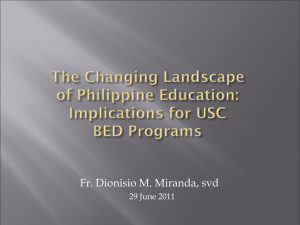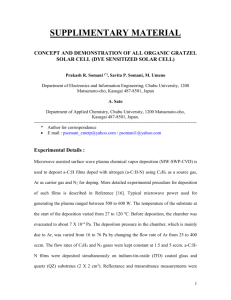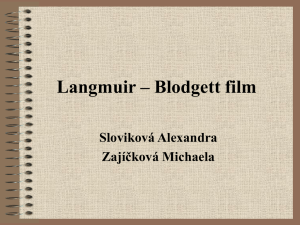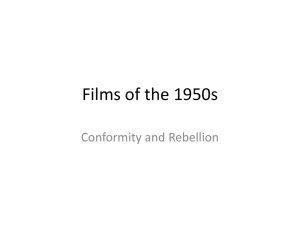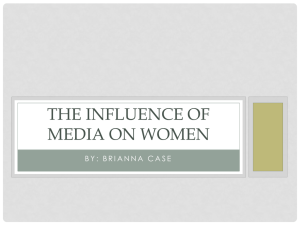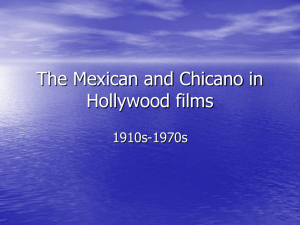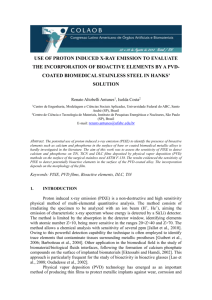Diamond like carbon
advertisement
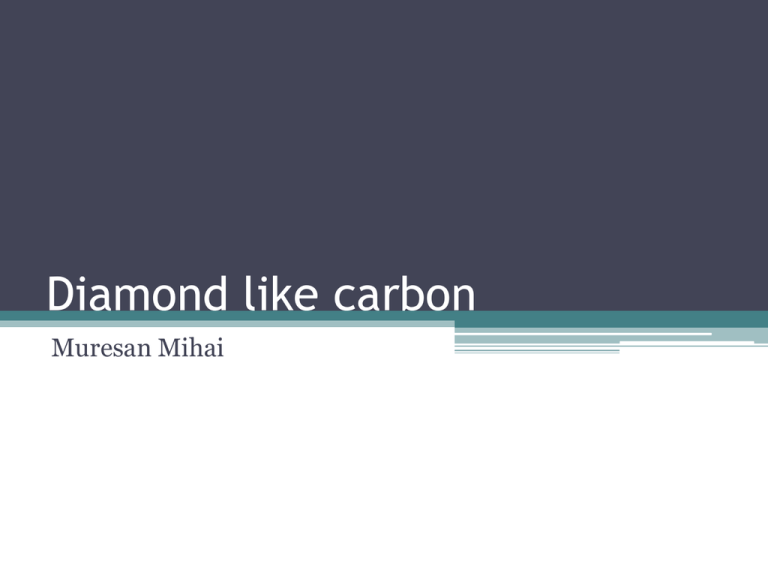
Diamond like carbon Muresan Mihai Carbon • Carbon is the fourth most abundant chemical element in the universe by mass • The structures of eight allotropes of carbon: a) Diamond b) Graphite c) Lonsdaleite d) C60 Fullerene e) C540 Fullerene f) C70 Fullerene g) Amorphous carbon h) SWCNT Carbon • Diamond – the hardest naturally occurring substance • Graphite – the cheapest fuel (coal), electrical conductor, heat resistant material and lubricant • Fullerenes – potential medical use • CNT – strongest and stiffest material, possible high electric conductivity, composite polymers, ultracapacitors • Graphene – ballistic electrical conductivity, gas detectors, IC, biodevices • a-C – a material that is not diamond or graphite a-C • a-C:H can be split in four types: 1. 2. 3. 4. polymer-like a-C:H (PLCH) with the highest H content (40–60%), but soft harder diamond-like a-C:H (DLCH) with intermediate H content (20– 40 at. %), hydrogenated tetrahedral amorphous carbon films (ta-C:H) with fixed H content 25–30 at. % H graphite-like a-C:H with less than 20 at. % of H a-C:H properties High thermal conductivity High hardness Good abrasion coefficient Low friction coefficient Gas barrier Inertness Wide band gaps a-C problems • Bad adhesion (especially on metals) • High stressed films • Thermal stability under 300OC (a-C:H) • Solving the problems: Fabrication of intermediate metallic layer Intermediate compound layer (WC, TiC) Doping with different elements DLC uses a-C and hard films production PECVD 2015 2010 2009 782 mil $ 905 mil $ 1.7 bn $ Arc discharge Magnetron sputtering Why PECVD? • • • • • • Relatively easy to produce plasma Pure deposition due to low pressure Large size depositions Precision of the coating Low melting point substrates Good dielectric properties PECVD System PECVD system • • • • • PECVD deposition CCP RF 13.56 MHz Vacuum system (~10-4 Pa) Gas flow meters 420 mm electrode PECVD chemistry Types of DLC films • DLC from CH4, H2 • DLC:N with N2 • DLC:SiOx with HMDSO/HMDSZ Deposition at room temperature Low cost Relative big substrates Why DLC:N films? Preparation of DLC films CH4 H2 N2 Power Self-bias Pressure Time d [sccm] [sccm] [sccm] [W] [V] [Pa] [min] [nm] CH16 8.5 2.5 2.5 100 -130 12 60 114 CH17 8.5 2.5 2.5 50 -50 12 60 216 CH30 8.5 5 0 100 -75 12 30 101 Sample Characterization of DLC films • ellipsometry - Jobin Yvon UVISEL 190-1000 nm • reflectometry - Perkin Elmer Lambda45 1901000 nm • FTIR transmittance - Bruker Vertex 80v 3707000 cm-1 correct transmittance accessory • depth sensing indentation - Fischerscope H100 with Vickers indenter • ion beam spectroscopies - Rutherford Backscattering Spectroscopy (RBS) and Elastic Recoil Detection Analysis (ERDA) Optical characterization Egσ Egπ [eV] [eV] CH16 5.012 CH17 CH30 Sample pσ pπ a 0.509 0.854 1.438 0.996 5.086 0.440 0.851 1.070 0.978 4.737 0.752 0.930 1.158 0.989 Optical characterization Optical characterization Mechanical characterization Sample CH16 CH17 CH30 CH30 a Y [GPa] 130 68 155 124 H [GPa] 18,5 6,7 21,7 13,1 Chemical composition 1% 0% C H N O 34% CH30 Ar content below 0.3% 65% 10% CH17 38% 13% 1% 6% 46% 29% CH16 57% a-C:H:SiOx films Hpl [GPa] 25 20 1.0 cHMDSO=21% friction coefficient 15 10 Y [GPa] 160 140 120 100 80 1.0 Dcr speed load 0.6 15 cm/s 10 N 0.4 0.2 0.0 0 1000 2000 3000 4000 5000 number of cycles 0.5 0.0 Pin-on disc testing conditions: Al2O3 ball with diameter of 6mm 0.8 0 5 10 SiOx [%] 15 6000 7000 Conclusions Hard DLC films can be produced on low melting point substrates DLC:N films can be used on metallic substrates DLC:SiOx films present higher thermal stability o The method is relatively cheap, can cover large substrates and can be employed for low melting point substrates (plastics) Thank you for your attention


